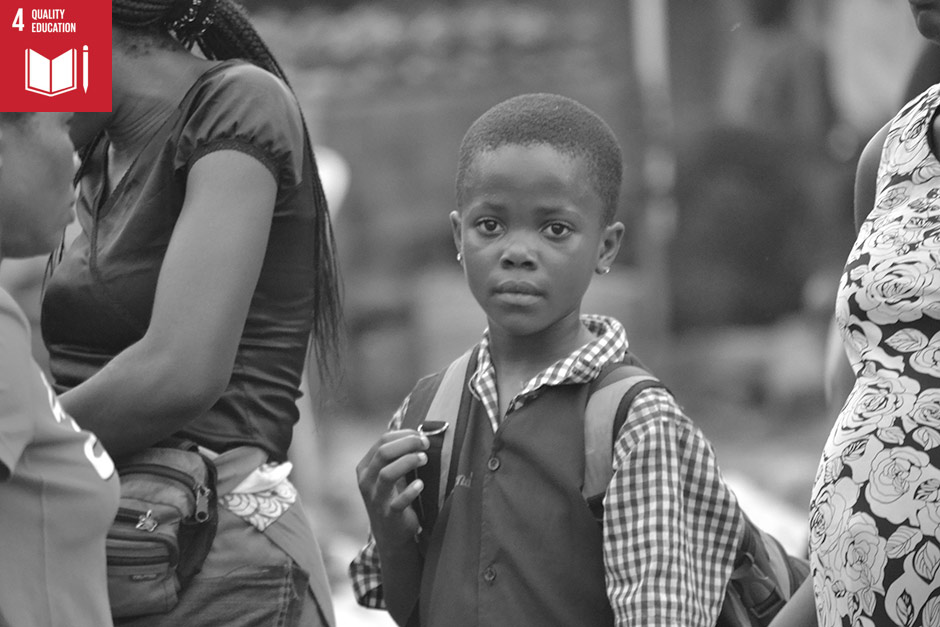

(Editor’s note: This post is part of a series covering YTF’s work with the United Nation’s Sustainable Development Goals. See more of the series here.)
Globally, 124 million children and adolescents are out-of-school (36% of school-age youth). In Sub-Saharan Africa, though, 71% of youth are out-of-school. This compares to 7% of youth in Europe and 18% in the United States.[1] Throughout the world, there are 63 million girls who are out-of-school with 45% of these girls living in Sub-Saharan Africa.[2]
Of primary grades, secondary grades, and tertiary education (post-secondary), students in Sub-Saharan Africa attend an average of 10 years, which equates to a 9th-grade education. The average for girls is an 8th-grade education. This compares to an average of 15.5 years in Europe (girls average 16.1 years) and to the United States where boys attend 16 years and girls 17 years.[3]
Many girls are excluded from high school in Sub-Saharan Africa since high school is no longer free—many families will pay for boys to attend but are not able to afford paying for their girls. Without completing high school, students are not able to attend college. There are no programs to attain a GED or to take high school equivalency exams—this leaves girls without sufficient education to go on to the careers that they are interested in and, frequently, results in early marriage, bearing children at a young age, menial labor, and lower quality health care for them and their families.
Parents’ level of education, especially mothers, can predict the level of education their children attain. The higher education the mother has, the more education their children will attain. Throughout Sub-Saharan Africa, 57% of the population has less than a high school education—this is 14% more for women than men; 38% of the population in Sub-Saharan Africa has no schooling at all—37% more girls than boys have no schooling. To compare, only .4 in the United States have no schooling, 12% have less than a high school education, and no disparities between boys and girls.[4]
In order to improve the education system and allow more people to lead prosperous lives, a transformation is needed within the ‘education ecosystem’ and technology may support this change. To increase the impact of these alternative learning approaches it is important to increase awareness of the benefits of digital literacy training and ICT in general, improve access to reliable ICT infrastructure, support the creation of a peer education network, improve the ICT skills of teachers, integrate the use of open educational resources (e.g., Massive Open Online Courses) which allow out-of-school youth to learn outside of the school walls, and facilitate the utilization of modern learning equipment and material (e.g. digital learning technologies).[5]
YTF Academy. The emergence of new technologies is changing society, the way we live, communicate, do business, and learn. YTF Academy gives young people the foundation necessary to live, learn, and work in a global, digital age, compete with their global peers, and be the next generation of innovators and change leaders. Through the combination of education and technology, YTF programs help participants gain new and innovative skills, education, and training that lead to higher education, more advanced employment skills, new career paths, enhancements to entrepreneurial businesses, and increased workplace skills.
Project LLP (Libraries and Learning Project). Previously, YTF partnered with IREX and its Beyond Access program to increase Internet access in developing countries. By collaborating with communities to create their own sustainable digital hubs in their local public library, women and youth can gain the 21st century digital skills and competencies they need to succeed with their global peers. YTF trained librarians in Nigeria to develop Information and Community Technology (ICT) and leadership skills as well as provided workforce development, business development, and financial capacity training for the women and youth of the community.
Libraries provide equality of access to knowledge and information and a safe place to learn, connect with others around the world, and to participate in training to increase employment skills. Pew Research Center reports that having a public library improves the quality of life in a community and that free access to computers and the Internet is a very important service that libraries provide.[6]
Read YTF’s Case Study (Improve the education system in Nigeria: the role of technology) on page 18 of The 2014 Africa Prosperity Report (Legatum Institute).
